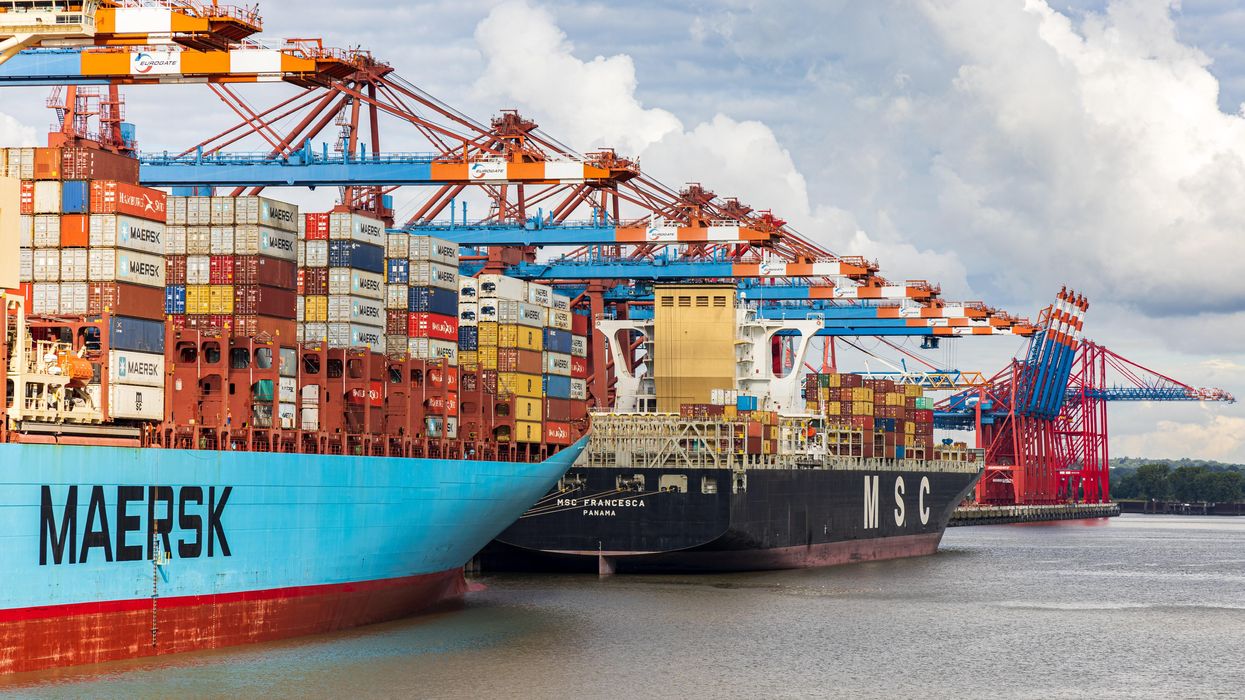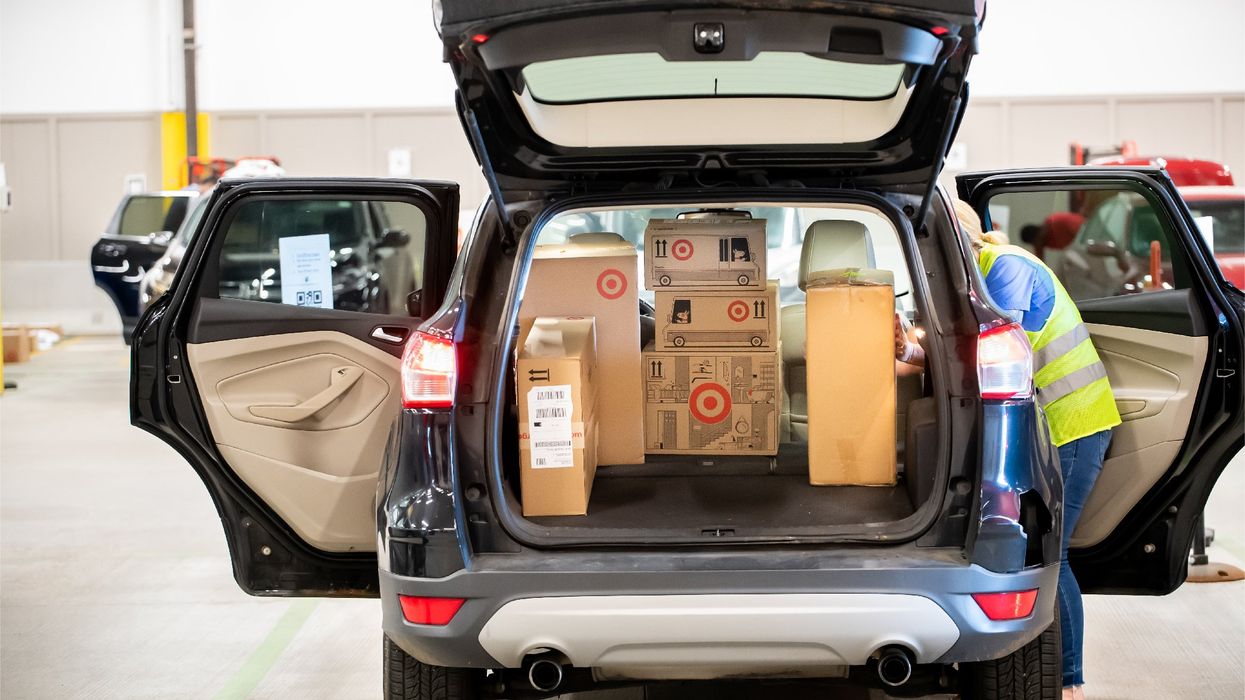As the leader of the global logistics practice at the management consulting firm Kearney, Michael Zimmerman often gets asked when supply chains are going to get back to normal.
The short answer, as he put it to attendees of the National Association of Chain Drug Stores Total Store Expo on Saturday in Boston: They’re not.
“That 2018-2019 period where logistics capacity was abundant and prices were pretty low – you shouldn’t expect that again,” he said.
While unexpected events could intervene, data laid out by Zimmerman and Kearney digital practices lead Todd Huseby from the 2022 State of Logistics Report by the Council of Supply Chain Management Professionals and Kearney outlined a period of massive change and rising costs that continues to reverberate. Given that global economic uncertainty continues, preparing for more swings ahead is the logical conclusion.
The last three years have rewritten how logistics professionals understand supply chains.
In the industry, there’s an often-used term called the bullwhip effect. It refers to the big impacts that small changes in consumer demand can have when they are out of sync with retail forecasts and capacity. During the pandemic, this took on new meaning.
At the onset of COVID-19 in the first half of 2020, consumer demand dropped off, as businesses stopped investing in people and pulled back. Demand for supply chain capacity went down.
When the first round of stimulus arrived, however, economic energy reignited, but it was all toward one segment of spending. With in-person activities and travel shut down, people wanted physical goods. That led to a spike in demand for supply chain capacity. It sent a shock to the system.
“You had a tremendous, unprecedented surge of demand which had met a substantial shutting down of capacity. The bullwhip effect was amplified,” Zimmerman said. “…That asteroid hitting the ocean reverberated throughout supply chains all over the world as providers scrambled to provide capacity and supply chains were disrupted, which further destroyed capacity.”
While the COVID lockdowns and other localized conditions that led to bottlenecks have eased, the period has resulted in change at all levels of the supply chain that brings goods around the world from manufacturers to retailers, and ultimately to consumers.
In 2021, US logistics business costs grew 22% to $1.8 trillion. That took logistics’ share of GDP from 7.4% in 2020 to 8% in 2021.
“This is the most dramatic and unprecedented rise in logistics costs in history,” Zimmerman said, saying conditions are even worse for shippers now than they were during World War II.
It's reverberating across the highways, shipping channels and warehouses where goods are transported. Zimmerman and Huseby shared the following examples in the following modes:
Road freight, primarily made up of trucking, grew 23.4% to $831 billion. Top carriers saw profits rise 50-100%. This is the largest logistics segment. Rates have started to soften in 2022, but costs are continuing to go up. Shippers are reevaluating their relationships based on the experiences of the last few years. In considering capacity, shippers should pay close attention to the experience at their distribution centers. One quick way is to take the pulse is to read Google Maps reviews from truckers.
Water and ports shipping saw container rates spike as high as $25,000 in 2021, and US water shipment costs in turn rose 23.6%. Carriers earned more profit in 2021 than the previous 20 years combined. While container costs have moderated from their late-2021 peak in the first half of 2022, capacity in this area remains a challenge following a year when shippers had to marshal private fleets to get goods to shelves to meet demand. Still, Zimmerman said there may be an opportunity for shippers to renegotiate rates ahead as carriers look to reset relationships in 2023.
Parcel and last mile delivery surged with the rise of ecommerce, as well, with FedEx and UPS seeing 9% year-over-year increases in revenue per package. The surge of demand led to new players entering the space, offering the opportunity for retailers to diversify the companies they work with, and even collaborating with others to pool resources and advance negotiating positions.
Warehousing capacity reached its limit in 2021, as vacancy rates dropped to the lowest in history and the cost per square foot rose to the highest ever. With goods becoming more difficult to get, retailers stocked up from different sources to ensure they would arrive on shelves.
“We’ve moved from a world of just-in-time to a world of just-in-case,” Zimmerman said. “One of the reasons all of these supply chains suffered from the bullwhip effect is because inventories got sapped.”
There are continuing efforts to seek additional space, even though supply is still limited. At the same time, retailers are seeking ways to move excess inventory, whether through writedowns, donations or other means. This underscores how the inventory glut is not just a phenomenon in the apparel industry, but also for chain drug store categories like health and beauty, as well.
While the challenges are many, the remade landscape has brought some improvements within logistics teams that they can take forward. Merchandising and supply chain teams are working together better than ever before, Zimmerman said. The tight labor market has led to a rise in salaries among truckers, and made taking care of employees and retention a priority for logistics professionals. With optimization in supply chains, there are opportunities to celebrate sustainability wins. The need for capacity will continue to advance automation and other technology that can make work more efficient.
Change will continue. While supply chain chaos has given way to relative calm in the middle of 2022, it’s by no means a time to take an eye off the horizon. After all, supply chains take 18-24 months to add capacity. Plus, strong macro forces shaping the supply chain continue to exert themselves. Geopolitical shocks like the war in Ukraine and trade conflicts with China are pushing talk about the future of production to shift from nearshoring to “friend-shoring,” where exchange of goods flows only between allies. Interest rate hikes by the Federal Reserve are increasing the likelihood of an economic slowdown. Natural disasters could bring literal storm clouds.
“You’ve probably heard the expression, ‘Hope is not a strategy,’” said Zimmerman. “This is a perfect example of that. Get your supply chains ready.”












